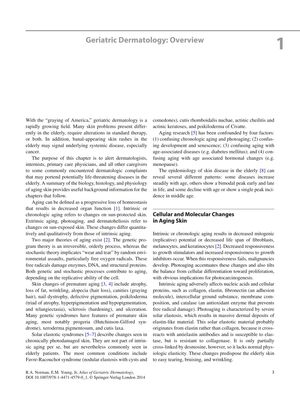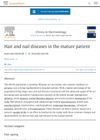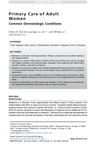Geriatric Dermatology: Overview
May 2013
in “
Springer eBooks
”
alopecia androgenetic alopecia skin aging intrinsic aging extrinsic aging atrophy nail dystrophy progeria solar elastotic syndromes cell replication immune response estrogen changes hair loss male pattern baldness skin thinning nail disorders premature aging sun damage cell division immune system hormone changes

TLDR Skin problems in the elderly are unique and may indicate other diseases, involving changes in skin, hair, nails, and increased cancer risk.
The document summarized the field of geriatric dermatology, highlighting how skin problems in the elderly can differ from those in younger populations and may signal systemic diseases like cancer. It explained the differences between intrinsic and extrinsic skin aging, and presented two main theories of aging: genetic programming and stochastic theory, which includes environmental damage by free radicals. The paper described skin changes such as atrophy, alopecia, and nail dystrophy, and conditions like progeria and solar elastotic syndromes that are prevalent in older adults. It detailed the cellular and molecular changes in aging skin, including reduced cell replication and increased cancer risk, and physiological changes like decreased repair and altered immune response. The document also covered changes in hair and nails, including androgenetic alopecia and slower nail growth, and discussed various skin conditions, immune responses, and the effects of estrogen changes in the elderly. It referenced studies on skin aging and treatments but did not provide detailed study results or conclusions.


